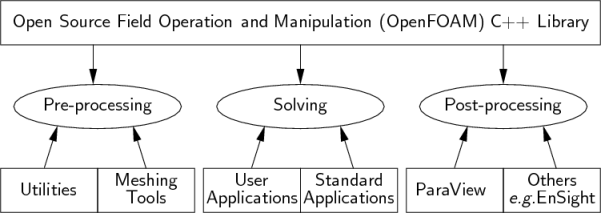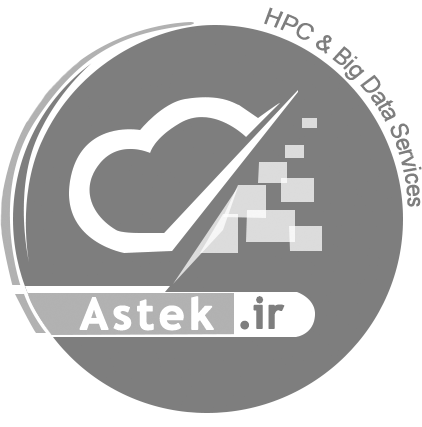This guide accompanies the release of version 5.0 of the Open Source Field Operation and Manipulation (OpenFOAM) C++ libraries. It provides a description of the basic operation of OpenFOAM, first through a set of tutorial exercises in chapter 2 and later by a more detailed description of the individual components that make up OpenFOAM.
OpenFOAM is a framework for developing application executables that use packaged functionality contained within a collection of approximately 100 C+ libraries. OpenFOAM is shipped with approximately 250 pre-built applications that fall into two categories: solvers, that are each designed to solve a specific problem in fluid (or continuum) mechanics; and utilities, that are designed to perform tasks that involve data manipulation. The solvers in OpenFOAM cover a wide range of problems in fluid dynamics, as described in chapter 3.
Users can extend the collection of solvers, utilities and libraries in OpenFOAM, using some pre-requisite knowledge of the underlying method, physics and programming techniques involved.
OpenFOAM is supplied with pre- and post-processing environments. The interface to the pre- and post-processing are themselves OpenFOAM utilities, thereby ensuring consistent data handling across all environments. The overall structure of OpenFOAM is shown in Figure 1.1.

Figure 1.1: Overview of OpenFOAM structure.
The pre-processing and running of OpenFOAM cases is described in chapter 4. In chapter 5, we cover both the generation of meshes using the mesh generator supplied with OpenFOAM and conversion of mesh data generated by third-party products. Post-processing is described in chapter 6 and some aspects of physical modelling, e.g. transport and thermophysical modelling, are described in in chapter 7.
---------------------------
source : https://cfd.direct/openfoam/user-guide/introduction
 English (UK)
English (UK) persian
persian 













